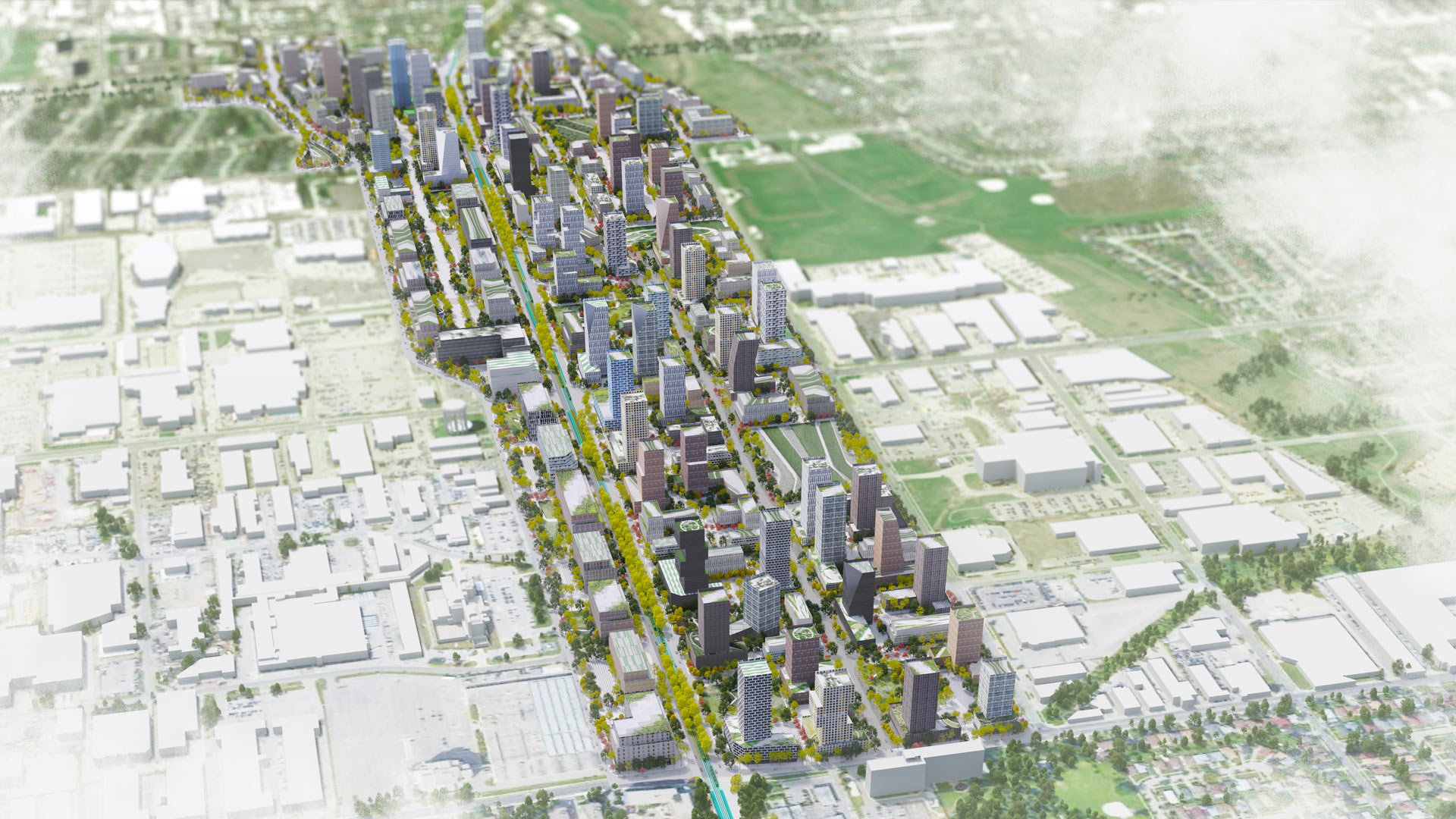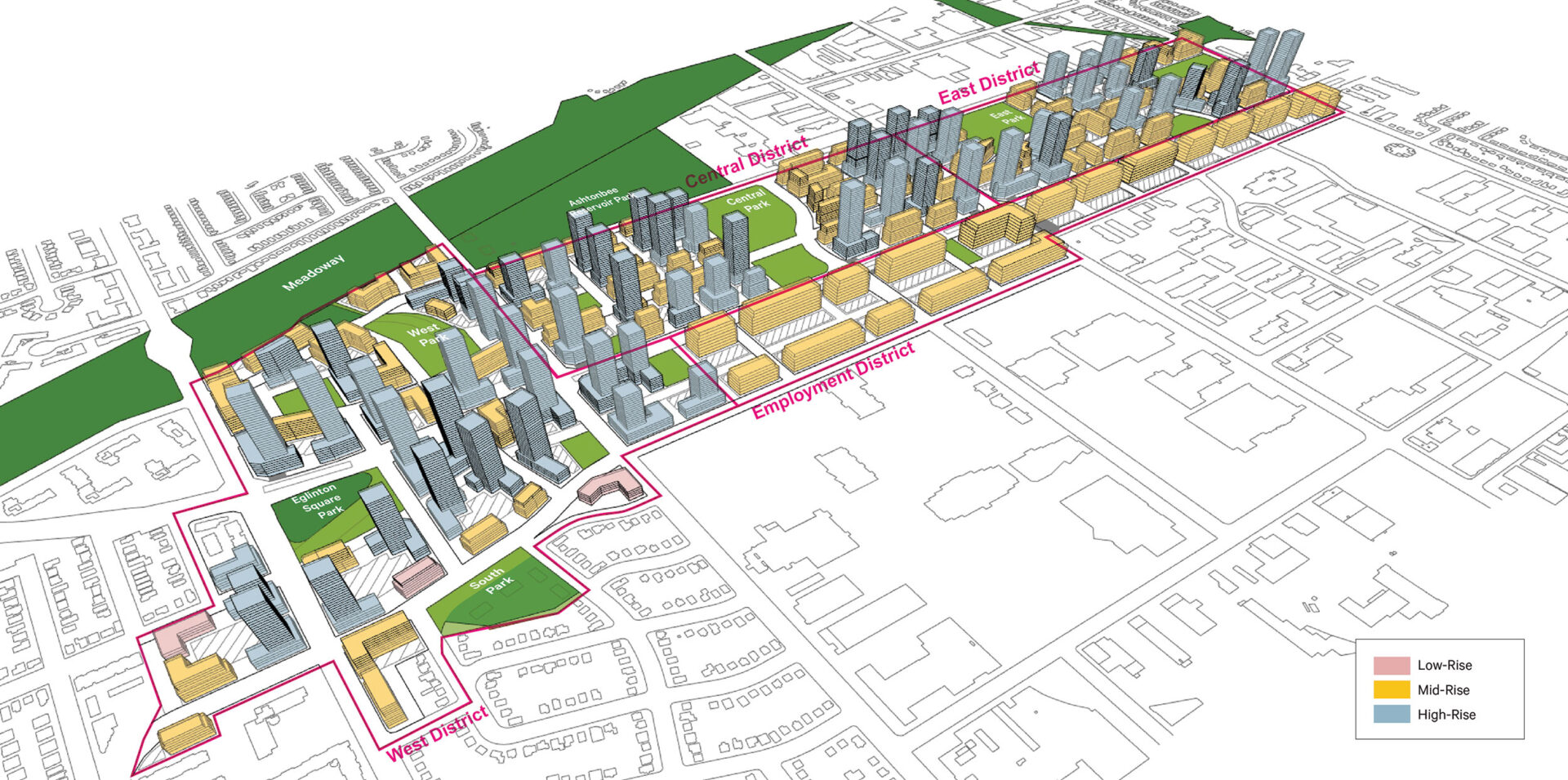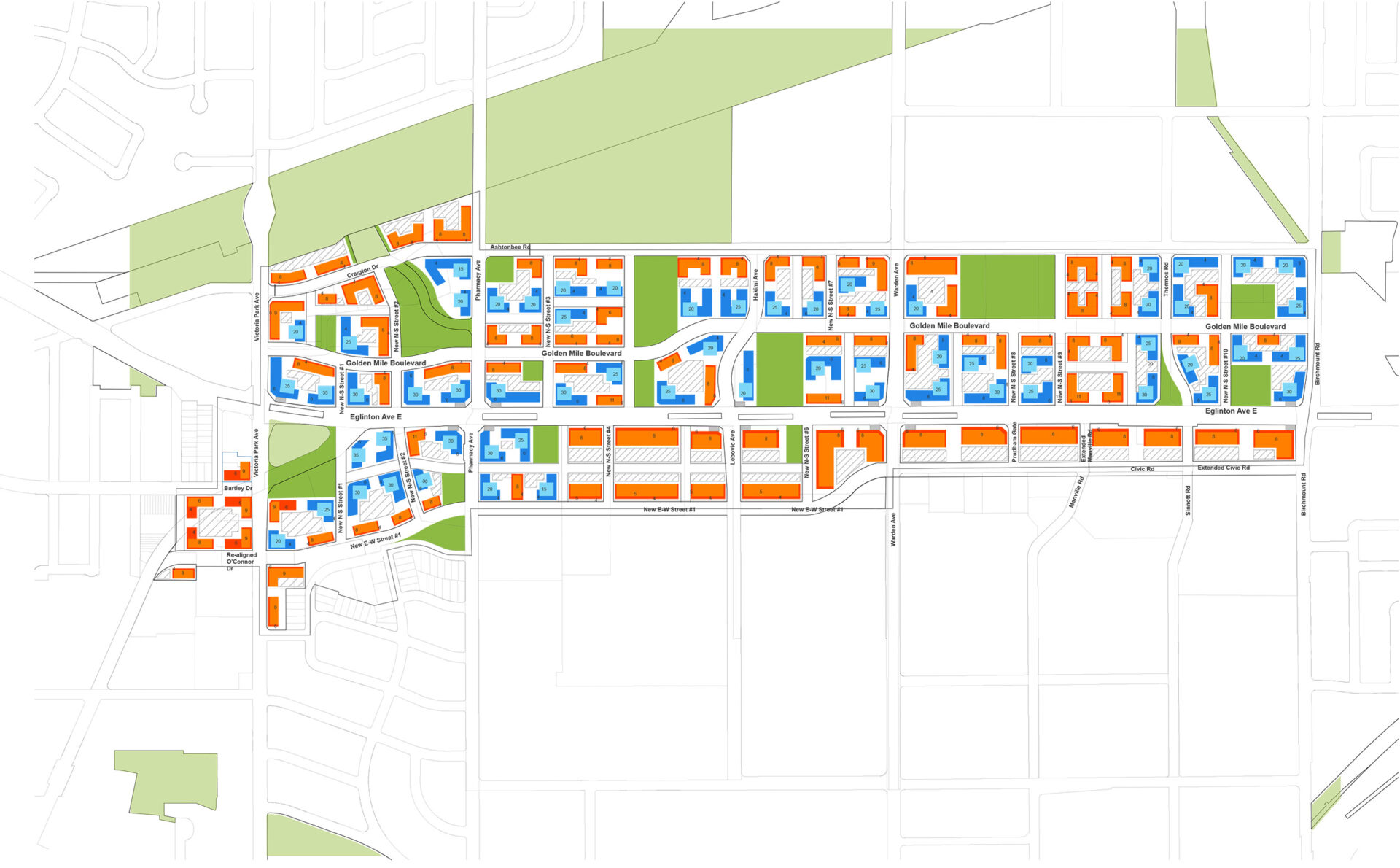Golden Mile Secondary Plan

Golden Mile Secondary Plan
-
Location
Toronto, ON
-
Client
City of Toronto
-
Dates
2018 - Present
- Expertise
- Planning
- Urban Design
- Architecture
Treaty Lands
Toronto Purchase Treaty 13 (1805)
Indigenous Rights Holders
Mississaugas of the Credit First Nation
Historical Occupation
Anishinaabe, Attiwonderonk, Haudenosaunee, Huron Wendat
*Treaty, territory and historical occupation information has been included for educational purposes, and is meant to show respect for these caregivers. This information is not intended to be a finite view, nor is it intended to represent legal rights or definitive boundaries. To learn more about these matters, please contact the nations in question.
The City of Toronto is undertaking the Golden Mile Secondary Plan Study, which will develop a vision and planning framework for a complete community within the Golden Mile Area which supports both the active employment uses and the existing and future mixed use and residential uses. The Golden Mile area currently consists of large-format retail buildings and surface parking with low-rise commercial and industrial buildings to the north and south of Eglinton Avenue East.
SvN is leading this project, with a sub-consulting team comprised of HDR, Cole Engineering, Swerhun Facilitation, Canadian Urban Institute, Workshop Architecture, and Schollen & Company.
The Study will include:
- a vision and planning framework for the Golden Mile;
- additional policies to the City’s Official Plan;
- Urban Design Guidelines;
- a Transportation Master Plan;
- a Master Servicing Plan;
- a Community Infrastructure Strategy;
- Parks and Open Space Strategy, and
- built form, streetscape, pedestrian, cycling and public art strategies.
Public and stakeholder consultation is taking place in three phases, involving the public and stakeholders in developing policies and strategies related to many elements of the study area, including land use, community infrastructure, public realm, and others. SvN’s approach includes strategies for reaching a range of audiences, including Local Area Committee meetings (City-led meetings that will function as a platform to test ideas before taking them to the broader public), public meetings/open houses (to reach the general public), and a pair of targeted outreach activities (pop up “Planners in Public Spaces Events” events designed to involve hard-to-reach-audiences).

